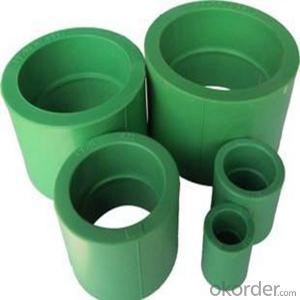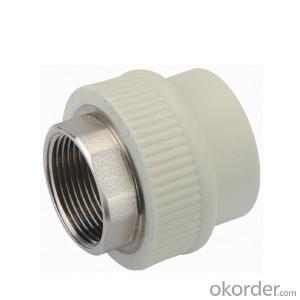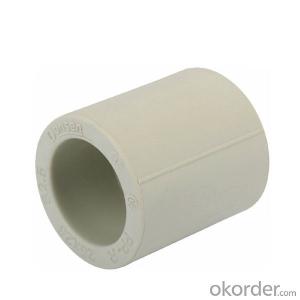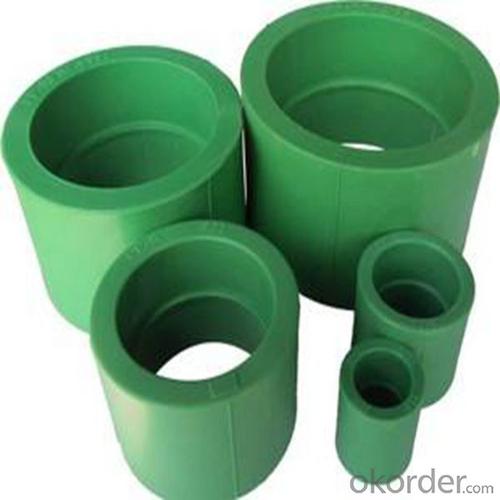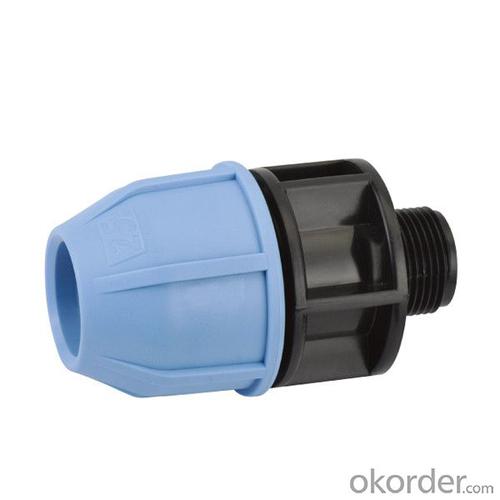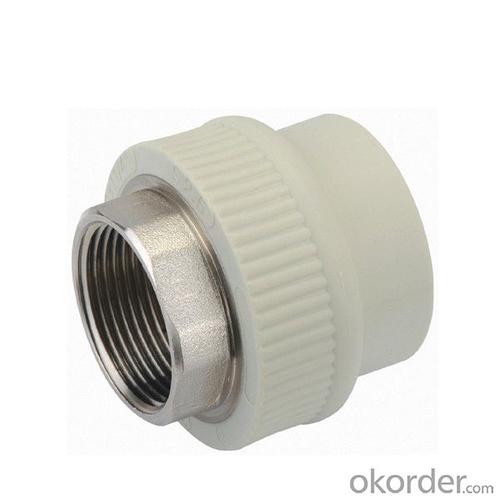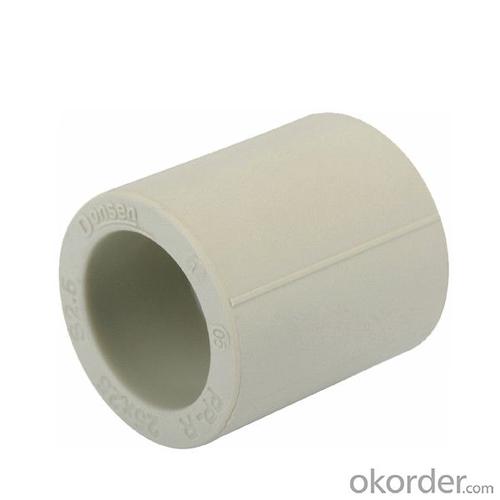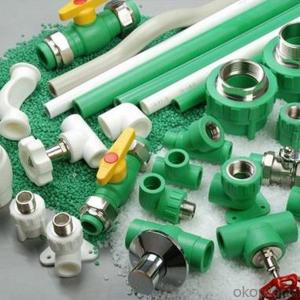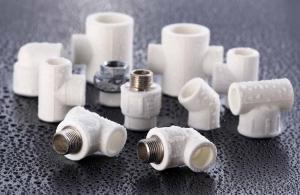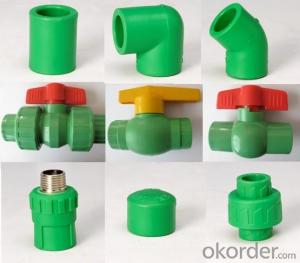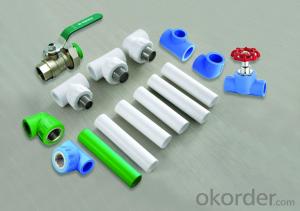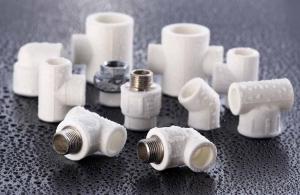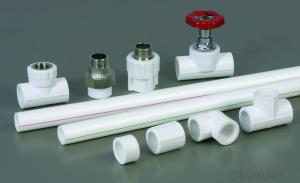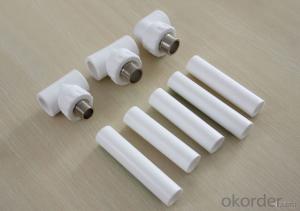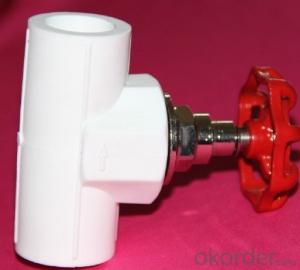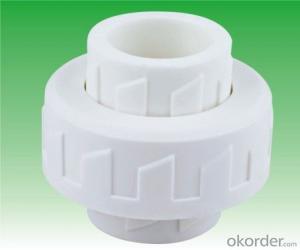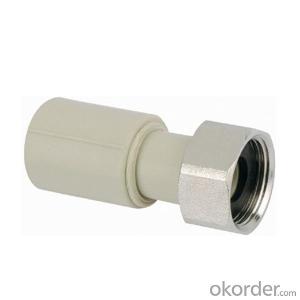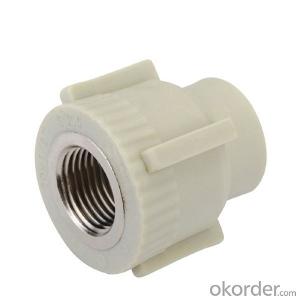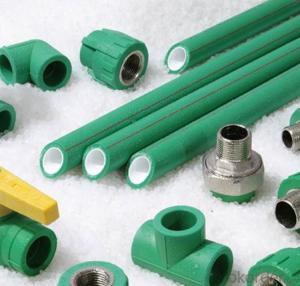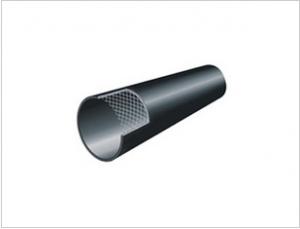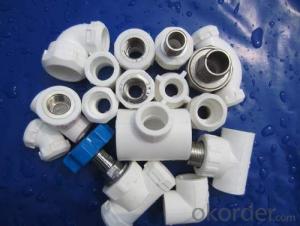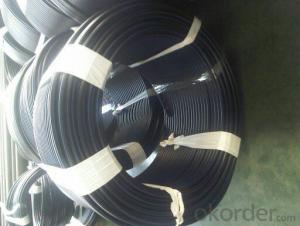1 1/4 Inch PPR Coupling for Industrial and Agricultural Fields from China
- Loading Port:
- Tianjin
- Payment Terms:
- TT OR LC
- Min Order Qty:
- 1000 pc
- Supply Capability:
- 1000000 pc/month
OKorder Service Pledge
OKorder Financial Service
You Might Also Like
Product Overview
1) Cold / hot water supply facilities for public buildings
2) Food, chemical, electronic industry pipeline networks; Such as Pipeline networks for transporting all kinds of corrosive liquids
3) Drinking water production system pipeline networks; Such as Pure water and mineral water
4) Air conditioning facility pipelines
5) Compressed gas pipeline networks for industry
6) Pipeline networks for swimming pools
7) Pipeline networks for solar energy facilities
8) Agriculture and garden production transporting systems
Product Applications:
1.Distribution for cool and hot water
2.Duct for drinkable water system
3.Pipes for kinds of high-temperature and low-temperature heating system
4.Pipes for heating and coolling settings in solar energy system
5.Connecting pipe for air conditioner
Product Description
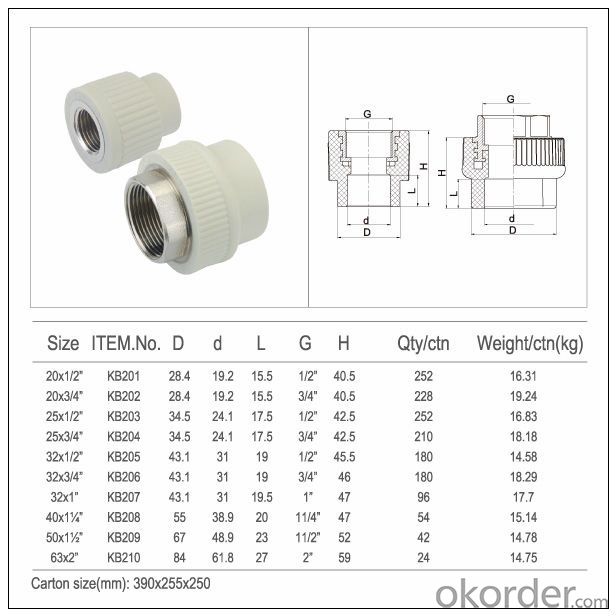
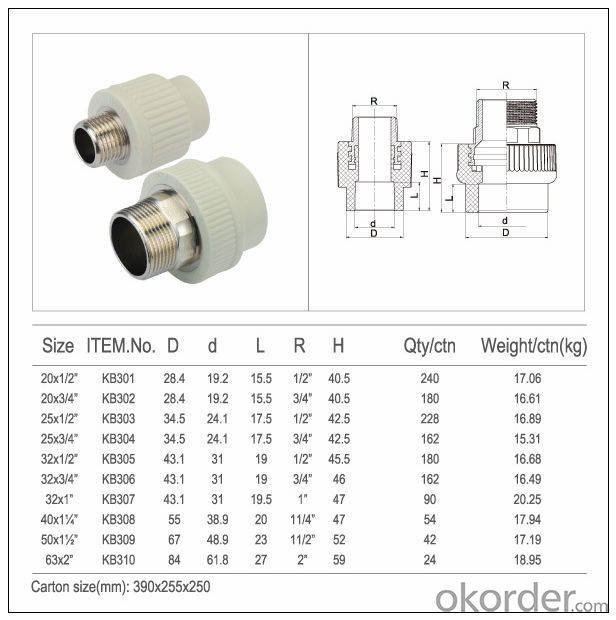
Product Show
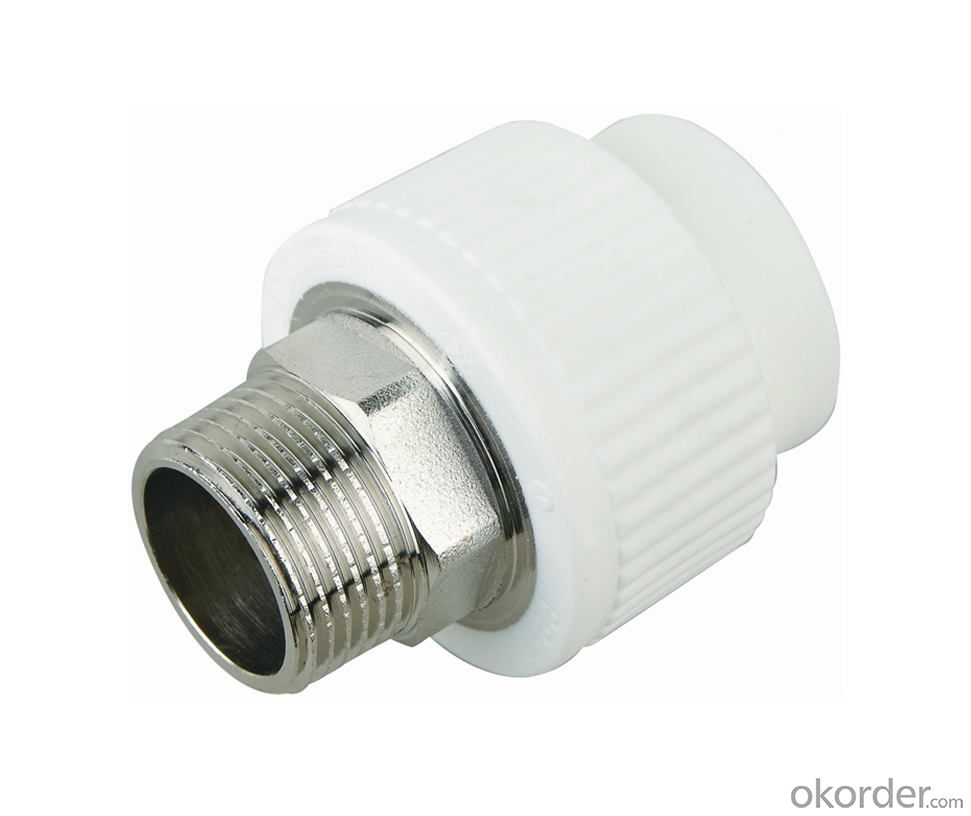
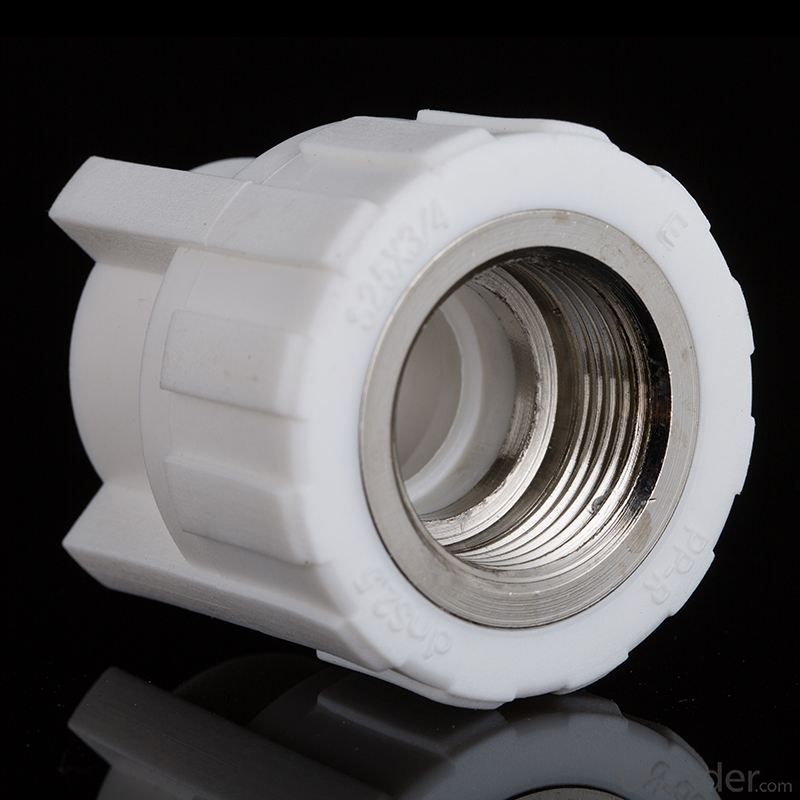

FAQ
1. Can you find a translator for me?
You can tell us which language you speak, we will find the translator for you, and will be together work.
2. If we want to develop some new item, but maybe we just have some ideas, how can you do?
We can make new mold base on your idea, generally, if your quantity is more enough, we can refund the mold cost to you.
3. How Long Is Delivery?
Delivery time will be 30-45 days according to order quantity.
4.What Is Our Normal Payments Terms?
Our normal payment terms: T/T, L/C or western union.
- Q: How do plastic pipe fittings compare to cast iron fittings?
- Plastic pipe fittings and cast iron fittings have their own advantages and disadvantages. Plastic fittings are generally more cost-effective, lightweight, and easier to install as they require fewer tools and are less prone to corrosion. They also offer good resistance to chemicals and provide more flexibility in design options. On the other hand, cast iron fittings are known for their strength and durability, making them suitable for high-pressure and high-temperature applications. They also have better sound insulation properties and are less likely to expand or contract. Ultimately, the choice between plastic and cast iron fittings depends on the specific requirements of the plumbing system and the intended use.
- Q: How about plastic pipe fittings?
- The length or depth of the connecting part of the pipe (called the socket in the standard) is long enough. Irregular production of pipe fittings, in order to reduce costs, deliberately Jerry built, socket is generally shorter, so that in the future use of the joint leakage easily. If from the angle of safe use, the longer the socket depth, the more users can compare or actual measurement. From an economic point of view, however, the minimum socket depth is given in the standard. 5., pay attention to the purchase of pipe fittings and pipe matching issues. First try several times into the pipe inserted tube, should not feel difficult, but after inserted into not too loose for good.
- Q: What are the common installation mistakes to avoid with plastic pipe fittings?
- Some common installation mistakes to avoid with plastic pipe fittings include overtightening the fittings, not using the correct type of pipe for the specific application, not properly preparing the pipe ends before installation, and not using the appropriate solvent or adhesive for joining the fittings. It is also important to avoid using excessive force when connecting or disconnecting the fittings, as this can cause damage or leaks.
- Q: Are plastic pipe fittings suitable for fire sprinkler systems?
- Yes, plastic pipe fittings are suitable for fire sprinkler systems. Plastic pipe fittings made from materials such as CPVC (Chlorinated Polyvinyl Chloride) or PEX (Cross-linked Polyethylene) are commonly used in fire sprinkler systems due to their durability, corrosion resistance, and ease of installation. They meet the necessary standards and regulations to ensure the safety and effectiveness of the fire sprinkler system.
- Q: Can plastic pipe fittings be used for underground applications?
- Yes, plastic pipe fittings can be used for underground applications. They are commonly used in underground plumbing systems due to their durability, resistance to corrosion, and ease of installation.
- Q: Are plastic pipe fittings resistant to high temperatures?
- Yes, plastic pipe fittings can be resistant to high temperatures, but it depends on the specific type of plastic used in their construction. Some plastic materials, such as CPVC (chlorinated polyvinyl chloride) or PEX (cross-linked polyethylene), are designed to withstand high temperatures and are commonly used in hot water systems. However, other types of plastic pipe fittings may have lower temperature limits, so it is important to check the manufacturer's specifications to ensure their suitability for high-temperature applications.
- Q: Can plastic pipe fittings be used for chemical waste systems?
- Yes, plastic pipe fittings can be used for chemical waste systems. Plastic materials such as PVC, CPVC, and polypropylene are commonly used in chemical waste systems due to their resistance to a wide range of chemicals. These materials are durable, lightweight, and provide excellent chemical resistance, making them suitable for handling various types of chemical waste. However, it is important to choose the appropriate plastic material and fittings that are specifically designed for chemical waste applications to ensure proper compatibility and safety.
- Q: Can plastic pipe fittings be used in fire evacuation systems?
- No, plastic pipe fittings are not suitable for use in fire evacuation systems. Fire evacuation systems require materials that are able to withstand high temperatures and are fire-resistant. Plastic fittings are not designed to meet these requirements and can melt or burn when exposed to fire, compromising the safety and effectiveness of the system.
- Q: Can plastic pipe fittings be used for rainwater harvesting systems?
- Yes, plastic pipe fittings can be used for rainwater harvesting systems. Plastic fittings are commonly used in rainwater harvesting systems due to their durability, affordability, and resistance to corrosion. They provide a reliable and efficient way to connect and distribute water from gutters and downspouts to storage tanks or other collection points. Additionally, plastic fittings are lightweight and easy to install, making them a popular choice for DIY rainwater harvesting projects.
- Q: Are plastic pipe fittings resistant to scaling?
- Yes, plastic pipe fittings are generally resistant to scaling.
Send your message to us
1 1/4 Inch PPR Coupling for Industrial and Agricultural Fields from China
- Loading Port:
- Tianjin
- Payment Terms:
- TT OR LC
- Min Order Qty:
- 1000 pc
- Supply Capability:
- 1000000 pc/month
OKorder Service Pledge
OKorder Financial Service
Similar products
Hot products
Hot Searches
Related keywords
